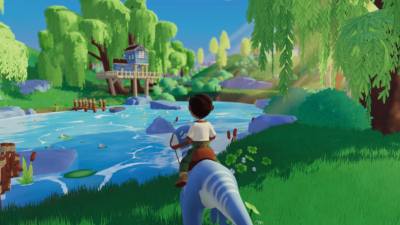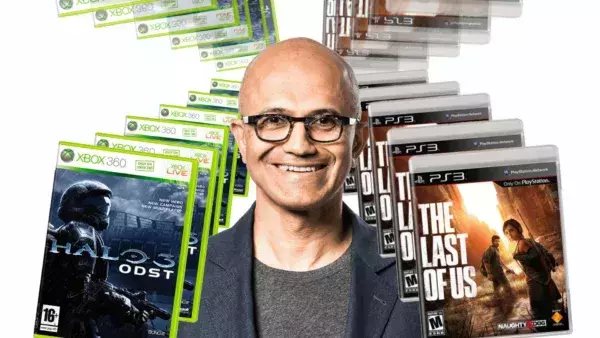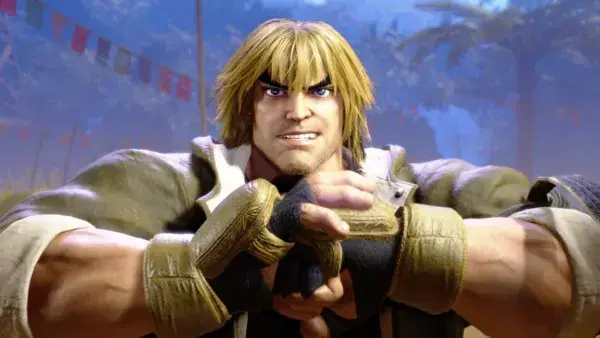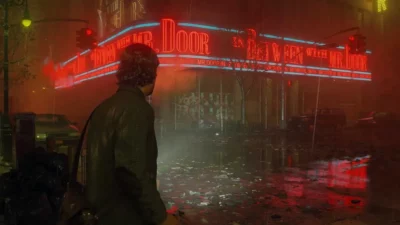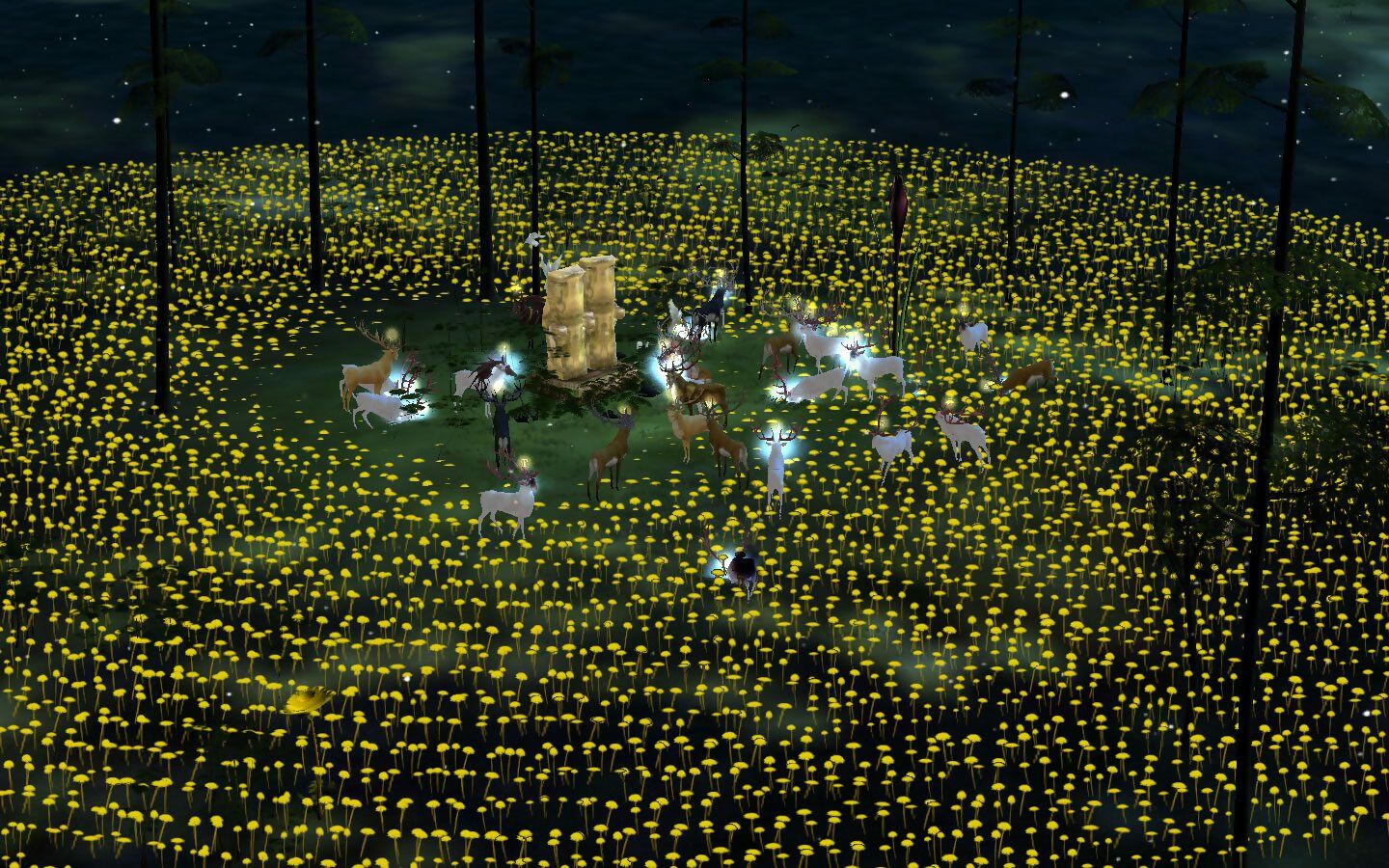
Tale of Tales was one of the games industry’s most unique indie studios over a history spanning 12 years. Its founders tell their story.
From its inception, Belgium-based studio Tale of Tales challenged the perception of what games could be. The Endless Forest was nominally an MMO, but was almost entirely devoid of the mechanics or objectives you’d associate with the genre. The Path was an interactive fairytale steeped in low-key horror. The Graveyard was a minimalist meditation on life and death. More than any other indie studio of its time, Tale of Tales approached games as art; their work influenced the likes of The Chinese Room and Naughty Dog, even as their output often split opinion among gamers and critics alike.
Unsurprisingly, Tale of Tales’ co-founders were, first and foremost, artists. Auriea Harvey was born in Indianapolis and studied sculpture; Michaël Samyn, initially based in Ghent, Belgium, is an artist turned programmer. Despite the thousands of miles that physically separated them, the pair met online in the 1990s, and went onto found their studio in 2003. “We were both working independently, taking advantage of the new opportunities offered by the internet,” Samyn recalls. “When web 2.0 started, we didn’t like it as much anymore, and looked for a new medium, and found it in games.”
Harvey and Samyn were among a generation of artists who embraced the internet in the mid-1990s – a movement known as net.art – and the pair brought more than a hint of its spirit with them when they started working on interactive experiences. “Most people started developing games because they liked playing Super Mario as children,” laughs Samyn. “For us, it was natural to use the medium to make works of art. Later, we found out this was a controversial stance, but we didn’t really set out to be rebels!”
Their first ideas were mainly abstract concepts. Harvey recalls, “We made a game called P-a-r-a-d-a-s-h, about a bird that flew around, picking up seeds and carrying them to different islands. Our second prototype, Guernica, is a little difficult to explain – it was about looking for data on a network and creating a world out of that data. The third was commissioned by the San Francisco museum of modern art; we used a web plugin to create a game world inspired by the Garden of Eden”.

One of a series of Polaroids taken by Tale of Tales while developing The Path.
The two describe their dissatisfaction at the state of gaming in the early 2000s, and how, in their view, most games seemed to look and play the same. “It took us years to realise people actually enjoyed that kind of repetitive design – we were definitely so naïve,” Samyn laughs. Still, Harvey expresses an affection for such games as Silent Hill 2, Black & White and “weirder” titles like Fatal Frame or Shadow of Memories.
Together, Samyn and Harvey made novel use of existing platforms and engines; their Eden.Garden, project, for example, was a map created in Quake 3. “We made two low-polygonal models of us naked as Adam and Eve,” says Harvey. “There’s still a picture of this [online], unfortunately!”
Eden.Garden is just one instance of Tale of Tales’ habit of bending the gaming medium to their own artistic ends. Harvey continues, “For us, games were a serious technology; for other artists, it was a culture they played with and parodied and laughed at. Everyone in the early days of the wide web was a creator. That early optimism was a great part of the first games we made.”
The unclassifiable nature of the duo’s work often led to a common problem: publishers simply didn’t know what to do with it. Says Samyn, “Usually, the first question publishers asked was, ‘what’s the genre of your game?’” Realising there was no place in the mainstream gaming world for their ideas, the two decided to try something different: get funding from arts associations.

The duo of Tale of Tales in 2011 in Belgium (photo taken by Paolo della Corte).
Early steps
“We ended up with money to create The Endless Forest, among others,” says Auria. “The Mudam [modern art museum] in Luxembourg provided us with some funding. They wanted us to make a piece of art, but we asked, ‘can we make a multiplayer game instead?’. Since everyone back then was playing World of Warcraft, we thought of the whole project as a middle finger to the game industry. We’re going to make a MMORPG as well, but in ours you control a deer in a forest and it will be an experiment about creating and living in a utopia.”
The project had a rough start, Samyn recalls – largely because of the duo’s relative inexperience in making 3D games. “Since we had no experience in modeling,” he tells us, “we hired a concept artist and friend, Lina Kusaite, who designed a deer, and then we outsourced the modeling of the character to a professional studio. While making it, we thought: no one was going to play this. We were definitely surprised when people did!”
Released in 2005, The Endless Forest was a unique multiplayer experience where players took on the role of a deer that roams a forest; there was no violence or combat, though players could meet with one another to dance and play simple childhood games like hide and seek. At one point, The Endless Forest’s real time performances had to be put on pause, Samyn says, because there were too many technical problems and the engine “felt like it was going to break at any moment”.
By the mid-2000s, with Steam providing a marketplace for indie developers, Harvey and Samyn felt like they had another chance to reach a wider audience. At the time, they were working on a much bigger project, The Path (see later), and seeking “a break” from it, embarked on another, smaller experience: 2008’s The Graveyard.
Presented in monochrome, The Graveyard sees the player control an old woman as she slowly ambles through a cemetery, clutching cane for support. Beyond that, player choice is limited to the ability to sit on a bench and contemplate for a while. The game was available first as shareware, but players could also pay to access the ‘full’ version. Says Samyn, “The only difference between the two versions was that the woman could actually die… which for us, was about asking the question: what are you paying for when you buy a game? Hours of play time or the experience itself?”
Samyn remembers this decision being controversial at the time. “We thought we were just making a small game about a woman walking around, but suddenly everyone was angry at us about it!”

The Graveyard was presented publicly at E3 in 2008.
The two describe The Path, eventually released in 2009, as their first big project – so much so that they ended up taking out a loan to sustain themselves through its three years of development. Based on the fairytale Little Red Riding Hood, the game sees the player control several little girls on what at first appears to be a quiet walk in the woods. This is soon revealed to be anything but, as the girls can’t seem to escape a gruesome end.
“We took it extremely seriously,” remembers Harvey. “We were probably the most serious we’ve been about anything, before or since. It was important for us that it would succeed. It came out, we had a launch party in San Francisco and Antwerp, we had the whole team together, which was probably the one time that happened, as we were working online. But… there were like five people, not twenty!”
It was after the launch party that the trouble started.
Harvey and Samyn recall people being critical of the game and mention being confused by the community’s reaction. Says Harvey, “We were experiencing, for the first time, online harassment and trolls, and tried to use that in a useful way: around that time, we started our blog. We were writing about things people [were saying]. Honestly, for the most part, people loved it, though. We also had cosplayers, which was something I love about gamer culture. We were even in Shonen Jump!”
The two mention how they started forming a little community around their games. Says Harvey, “We went to a lot of game conferences and were regularly meeting the same people. For us, as artists, it was strange, since in the art world, people say very little about your work, it feels mostly silent. In games, there’s a lot of talking and conversation. Journalists often come from a gamer background and started writing about it. When all the artistic games came out, lots of journalists started educating themselves, which was a beautiful thing to see.”

The Path is infused with horror throughout, with its fairytale imagery and violent narrative.
Games as art
During their time as game developers, Harvey and Samyn discovered that it’s not easy to find an audience by making leftfield experiences. Indeed, Harvey remembers that some of the opinions published on their blog sometimes sparked a modicum of controversy. “You can make anything into a video game,” says Samyn. “If you define it as a thing on a computer [made] using a certain tech, then, obviously, you can make anything in that space… If you don’t feel bound to rules and genres or any definition of fun, you can make something original each and every time. But, apparently, saying this in 2007 was enough to make people go crazy.”
Samyn adds that, in order to make something new, developers need to abandon traditional story and game concepts. “Video games can be interacted with in a way that movies can’t, or a painting or sculpture can’t. I’m still surprised that computer technology is being used as a tool for creating conventional things like drawings. All the traditional rules of a ‘genre’ can be applied, sure, but they’re not the basis. The main difference is that a game is being run in real time, and the presence of the user and gamer is required”.
After three years of development and a successful release for The Path, Harvey and Samyn decided not to make another project on the same scale. Instead, the studio made Vanitas and Fatale, both smaller projects, “which we did just to prove to ourselves that we had the strength and imagination to make something else,” Harvey says. “We were quite burned out.” But the two would not sit still, making other projects like Bientot l’etè (2013), which was mostly Samyn’s design, with his partner working on research and development.

In Bientot l’Ete, players take part in a surreal experience, walking along a sea shore and discovering secrets.
Tale of Tales also started NotGames, an online forum specifically made for creators, since, as Samyn recalls, “there wasn’t much discussion online on how to make something with gaming technology that wasn’t necessarily a game. There was a lot of discussion on art and design. Both The Chinese Room and Fullbright, developers of Dear Esther and Gone Home, were part of the community and we both inspired each other.”
In 2013, Tale of Tales released Luxuria Superbia – an engagingly tactile touch screen experience Harvey says was made almost by accident. “That happened because we were trying to remake our first prototype, which then turned into something overambitious like a game about the whole universe.” At the time, the two were working on two projects at the same time, but switched work between them every month. Samyn laughs, “this is how one of those became so big that it got out of hand!”
The happiest of accidents, Luxuria Superbia was a critical success, earning positive reviews in outlets like Slate and The Guardian, as well as several nominations from independent game festivals.
Two years later, the studio would release their swansong, Sunset, which was approached in a completely different way from the rest of their projects. “We set out to make a game for gamers,” says Samyn. “Before, our motto was the opposite, since so many people who didn’t play rejected the idea, and we wanted to reach them. In the end, we had to admit that idea failed. It was frustrating for us to see people use our games in the wrong way, like making their six-year-old nephew play The Path.”

A mellow landscape from Tale of Tales’ swansong, Sunset.
Harvey expresses pride over the studio’s work on Sunset. “It was about communism, civil war, immigrants issues, power struggles. The idea was always to write a story about a housekeeper, but trying to say something about the world and what was going on in the present. Sunset was set in 1972. We also have vague memories of being small children in the 70s and wanted to play with that. It was about revolution and the Black Power movement in the US. Since I also left America, I was thinking about other women who left the country in search of a better life, that kind of ironic reversal of the typical American dream. We went to Cuba and did serious research in the culture and history – it was so much fun. So, in a way, I’m proud of Sunset being our last game – it said everything we needed to say.”
The studio was also a pioneer in providing physical releases of games – something common today, but rarer back then. True to their artistic roots as always, Tale of Tales’ releases were all handmade. “For Sunset, we put confetti inside the boxes, while for Bientot l’Etè we had sand and a card game. The cards had phrases on them, mirroring those in the game, but we didn’t provide any rules, so the player had to make up their own. For us it was kind of ironic, selling physical stuff: we sold a poster for the same price of a game. The only difference is that the last one took three years and the poster one afternoon!”
Harvey and Samyn describe physical media was a way of connecting with people who enjoyed their games, like sending someone a letter.

The collector’s edition of The Path with physical bonus items
Nothing left to say
When the two finished working on Sunset, they recall feeling like they had nothing more to say in the medium, and with the rise of GamerGate, they decided to abandon game development altogether in 2015. “We discovered how games had seeped into our way of making art,” says Harvey. “We discovered games had stunted our creativity after 13 years of working on them. We decided to leave and we ended up staying in Poland.”
While staying at the former house of Polish playwright Tadeusz Kantor, the two recovered their artistic spirit by making a giant VR project – Cathedral in the Clouds – and inviting people from around the house to take part in it. “It was a bizarre situation,” Auria recalls. “It was the most extreme way to get out of that mindset. We’re content with VR being a sort of theatrical activity, rather than a game. So I decided to go back to sculpture, because that’s also where I started. In the end, we decided to move to Rome, which we didn’t really have to do in order to continue our research on VR, but it didn’t hurt!”
The two feel like the forefathers of an artistic trend in indie gaming – or at least, they hope so. “My hope is that our work has inspired and encouraged people to do something that isn’t simply making a Mario-like game,” Samyn laughs. “Not that I have something against it, but it already exists! You don’t need to make it again.”
“As artists, it’s normal for us to write a manifesto and do controversial things,” Harvey adds. “We brought that kind of energy to indie gaming.”
Samyn expresses some frustration, however, that more developers haven’t followed the studio’s experimental approach. “You can’t use the excuse that gaming is a young medium, because it’s not anymore,” he says. “The [Marcel] Duchamps of the [20th century] were making movies; the Duchamps of our time aren’t developing games. [Canadian artist] Char Davies made VR in the 90s, but no one made anything further than that, even years later. Which is strange, especially considering how much more accessible the tech is today.”
At the moment, Harvey and Samyn are working on a remake of The Endless Forest, with the aim being to update the experience for modern systems. Sadly, the pair rule out embarking on an entirely new project, citing a lack of stamina. Says Samyn, “Our mission was to expand the audience for games, which felt like an impossible dream, since people want the same thing over and over again. I’m pretty sure it would be difficult to develop a romantic comedy in a game – unless you make it a shooter with zombies.”


